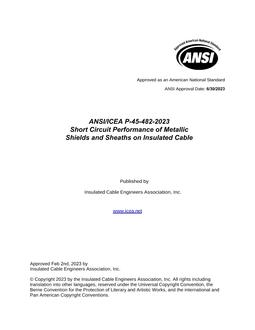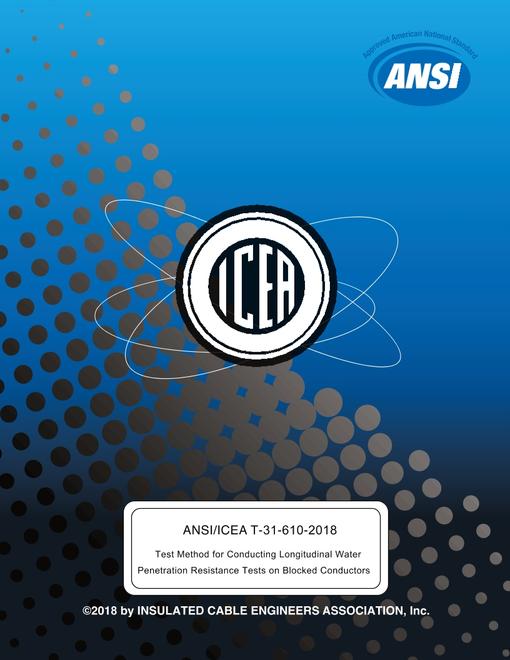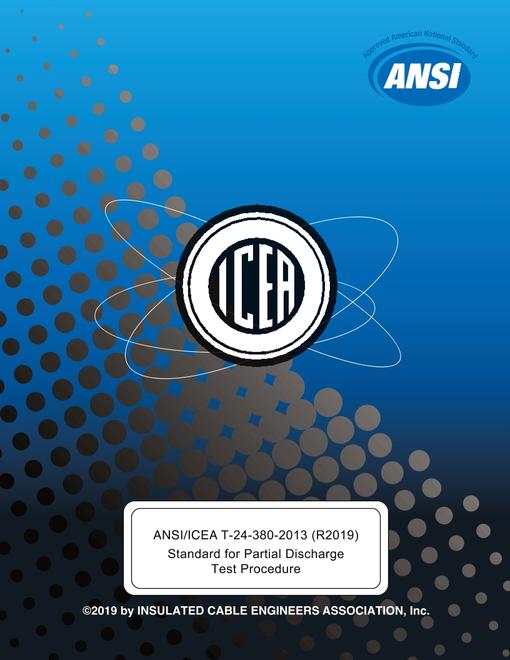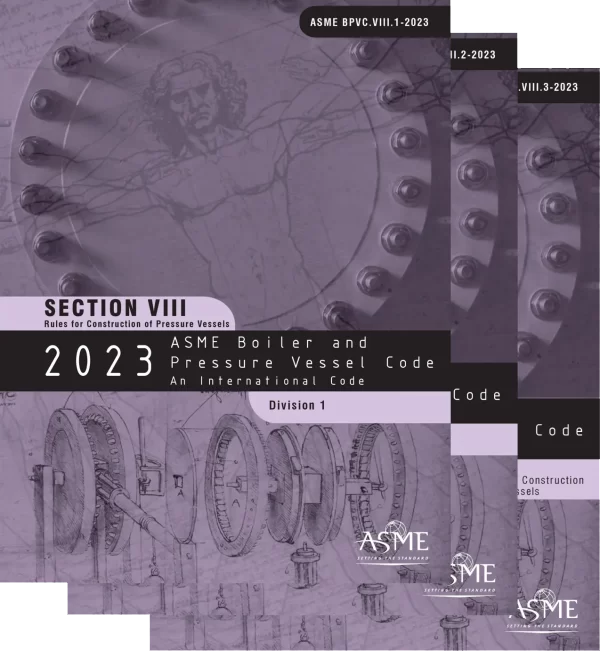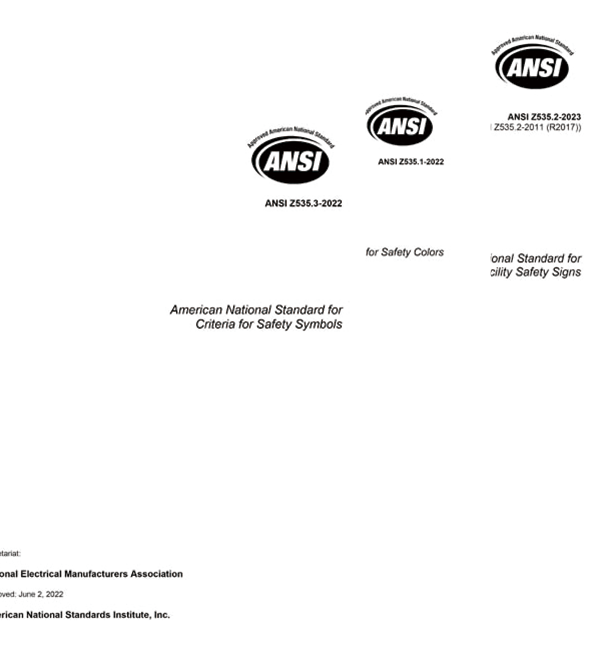ICEA P-45-482-2023
2023
Short Circuit Performance of Metallic Shields and Sheaths on Insulated Cables
- Format:
- Language(s) :
- Published :
- English
- 2023
This publication discusses factors for consideration in approximating the operability of insulated and/or covered wire and cable under the influence of uninterrupted short circuit currents encountered as a result of cable or other equipment faults. The duration of such a fault is considered to be up to approximately 2 seconds. Calculation for single short circuits of longer durations will yield increasingly conservative results.
The following items must be considered in order to estimate the short circuit performance of a specific circuit:
a. The magnitude and duration of the fault current including any fault current division due to available conducting paths.
b. The capability of joints, terminations and other accessories in the affected circuit to withstand the thermal and mechanical stresses created by the fault.
c. The interaction between the faulting circuit and surrounding equipment, such as supports, ties and clamps.
d. The capability of the affected cable circuit, as installed, to withstand the electromagnetic forces created during the fault.
e. The maximum temperature that cable components can withstand without incurring damage due to heating caused by fault current flow.
f. Damage to adjacent equipment due to arcing at the site of the fault.
g. For limitations imposed on the short-circuit current in the cable phase conductor see ANSI/ICEA P-32-382, Short Circuit Characteristics of Insulated Cable.
It is noted that the short circuit temperature of the sheath/shield is considerably higher than the conductor (as noted in ANSI/ICEA P-32-382) when both are in contact with thermoset materials. It should be considered that the conductor is the center of the thermal mass of cable. All heat generated by current loading has to radially dissipate to the cable surface by propagating through all the different cable layers and associated thermal conductivities depending on cable construction. In contrast the metallic shield being usually under the outer covering(s) only has to dissipate heat through said layer. This outer layer having the ability to withstand more heat allows the acceptance of higher temperatures as opposed to the conductor.
An important simplifying assumption in the formula is the adiabatic nature of the heat generated, i.e., the duration of the fault is so short that all the heat developed by the fault current during this time is assumed to be completely contained within the sheath or shield. The amount of heat dissipated from the sheath or shield during continuous, single fault occurrences of relatively short duration is small. A significant amount of heat may be dissipated because of the relatively long cooling periods involved for faults interrupted and reestablished with automatic reclosing of circuit protective devices. A non-adiabatic calculation may be more suitable for these situations and for single, uninterrupted short circuits in excess of 2 seconds requiring close accuracy. Non-adiabatic calculation methods are described in several published works listed in Section 4 “Bibliography”.
The formula (1) described in this publication is based on the thermal capacity of the metallic sheath/shield material and the transient temperature limit of the adjacent cable component materials. The quantity of heat contained in the metallic sheath/shield is that created by the fault current and is also a function of the temperature rise in the metallic sheath/shield. The magnitude of the temperature rise is the difference between the upper temperature of the cable material in contact with the sheath/shield and the operating temperature of the sheath/shield immediately prior to the initiation of the fault.
The operating temperature of the sheath or shield depends on the temperature of the conductor and the insulation thickness which is determined by the cable voltage rating. See Section 3, Table 3-3 for suggested estimated values.
The maximum transient temperature limits of the cable component materials are those which cause no significant change in the materials. The limits in Table 3-4 were extrapolated from laboratory test data. Actual short-circuit tests, requiring specialized test equipment, are also a good means of determining the short circuit capability of metallic shield design. These tests can justify increased values of T2 that may be acceptable.
| ICEA P-45-482-2023 | |
|---|---|
| STANDARD INFO: | |
| Standard Name | ICEA P-45-482-2023 |
| Scope | Short Circuit Performance of Metallic Shields and Sheaths on Insulated Cables |
| Publisher | ICEA - Insulated Cable Engineers Association |
| Languages | English |
| State | |
| Publication Year | 2023 |
| Most recent Version | MOST RECENT |
| Whether to be replaced | |
| Addendum | |
| FILE INFO: | |
| ANSI | ANSI Approved |
| File Size | 1 file , 360 KB |
| Note | This product is unavailable in Ukraine, Russia, Belarus |
| Number of Pages | 16 |
| Published | 2023 |
| ICEA P-45-482-2023 | ||
|---|---|---|
| History | Publisher Year | |
| ICEA P-45-482-2023 | 2023 | Current |
| ICEA P-45-482-2017 | 2017 | |
| ICEA P-45-482-2013 | 2013 |
Related products
- Format:
- Language(s) :
- Published :
- English
- 05/05/2023
$65
- Format:
- Language(s) :
- Published :
- English
- 2023
$51
- Format:
- Language(s) :
- Published :
- English
- 06/13/2018
$46
- Format:
- Language(s) :
- Published :
- English
- 06/26/2013
$46

Over 3,000,000 global standards
Our standards library is extensive, with over 2 million documents, ensuring we meet the needs of various industries. Whether it’s ASME, DIN, ASTM or ISO and other internationally recognized standards, we offer complete documents and the latest versions to help customers adhere to industry regulations in their projects. Whether your needs are technical standards, regulatory requirements, or design guidelines, our standards library provides comprehensive support.
24 online customer service
Our team includes up to 50 engineers from fields such as healthcare, electronics, and construction, who can answer your technical questions and ensure you find the correct and accurate standard documents. We are dedicated to helping you find the best solution that meets your needs.

Thanks to the StandardsClub customer service team for helping me find the ASME BPVC-2023 SET I was looking for in a high-quality PDF version. Their assistance was excellent, and the document quality exceeded my expectations!
This standard document is very detailed, covering all relevant technical points, and provides comprehensive guidance for my project. The ANSI/NEMA Z535 SET was exactly what I needed, and I am very satisfied with the quality!
The purchasing process was straightforward, the price was very competitive, and the download was quick. The Tissue Engineering Standards Addressing Product Quality and Characterization Package was of excellent quality and provided all the information I needed. Definitely a great value for the price!
“Got questions? Our professional customer service is ready to assist you anytime. Whether it’s finding documents, getting discounts, or navigating the purchase process, let us help you get the standards you need!”

Sign Up Our Newsletter
Don’t miss out! Subscribe now to get exclusive offers and industry insights!
We care about your data in ou privacy policy.

